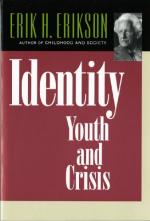|
This section contains 783 words (approx. 2 pages at 400 words per page) |

|
Perspective
Since Erik Erikson is the author of Identity, Youth, and Crisis which is a non-fiction work of clinical psychological theory, the perspective of the book is wholly his. Erikson's early life was characterized by his interests in art and teaching art. Due to some personal struggles, he sought treatment with Anna Freud who turned his interests towards psychoanalysis and leading him ultimately to become a psychoanalyst.
As Erikson was heavily influenced by Anna Freud, her father's work left an indelible mark on Erikson's perspective. Erikson affirms the basic Id-Superego-Ego model that Freud advances and understands human motivational as more libidinal than the general public although significantly less than Freud. He also thinks that human biology carries with it a development process for the psyche, but his stages are less sexually oriented and have eight stages rather than five.
However, Erikson is also a critic of psychoanalysis, although not...
|
This section contains 783 words (approx. 2 pages at 400 words per page) |

|




